Street Photography for Beginners—Tips, Settings, and Inspiration
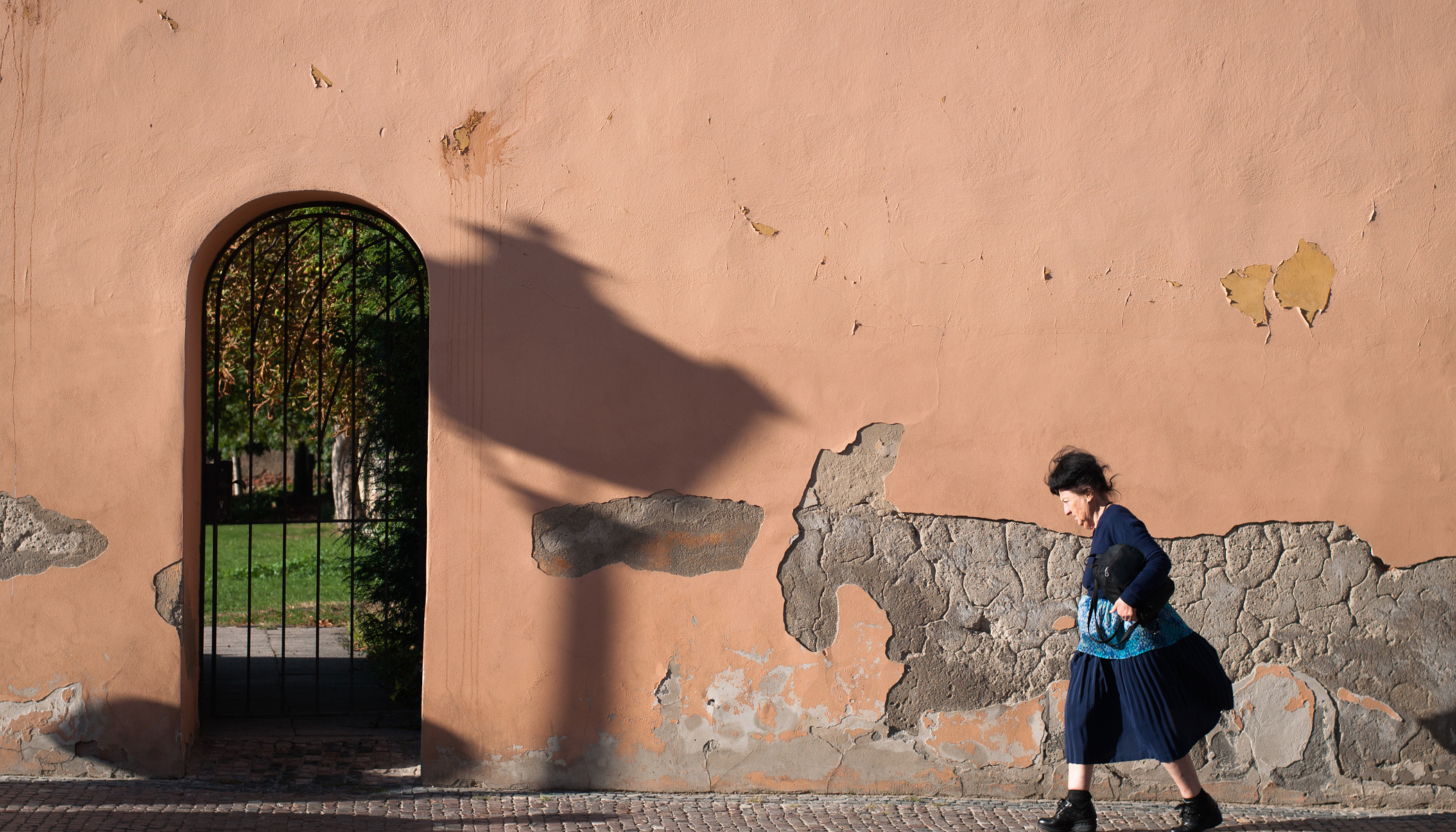
Street photography is about courage, mindfulness, and the ability to see beauty in everyday moments. Unlike landscape or macro photography, the city offers not only opportunities to work with light and composition, but also to connect with people, their stories, and your own boundaries. In this article, you’ll learn how to overcome your fears, photograph people respectfully, make the most of the city’s hustle and bustle, and capture images with soul.
Street photography doesn’t begin when you press the shutter—it starts with observation. Before you reach for your camera, take a moment to acclimate with your eyes and ears. Try standing still for a while—at a busy intersection, in an underpass, in a bustling square. Watch the rhythm of the place—how people move, where they pause, how the light falls on different surfaces. What’s happening in the shop window reflections? Who’s standing still, who’s running, and who stopped to check their phone?
Notice the different kinds of people you see. Tuck them away for now in your “mental notebook.” Don’t photograph them yet. Observing first isn’t a mistake; it’s part of the process. If you start to feel invisible, that’s fine. And if you feel like someone is watching you, that’s valuable too. You are getting used to the role of a photographer in public spaces. And when something catches your attention, jot down the idea or situation. Observation is the first step toward a great shot.
Use your shyness to your advantage
Not everyone feels comfortable approaching strangers on the street. You don’t have to, especially at the beginning. In fact, a bit of restraint can work in your favor. You’ll learn to notice subtler moments beyond the obvious ones. Look for stories in small details, learn to read between the lines.
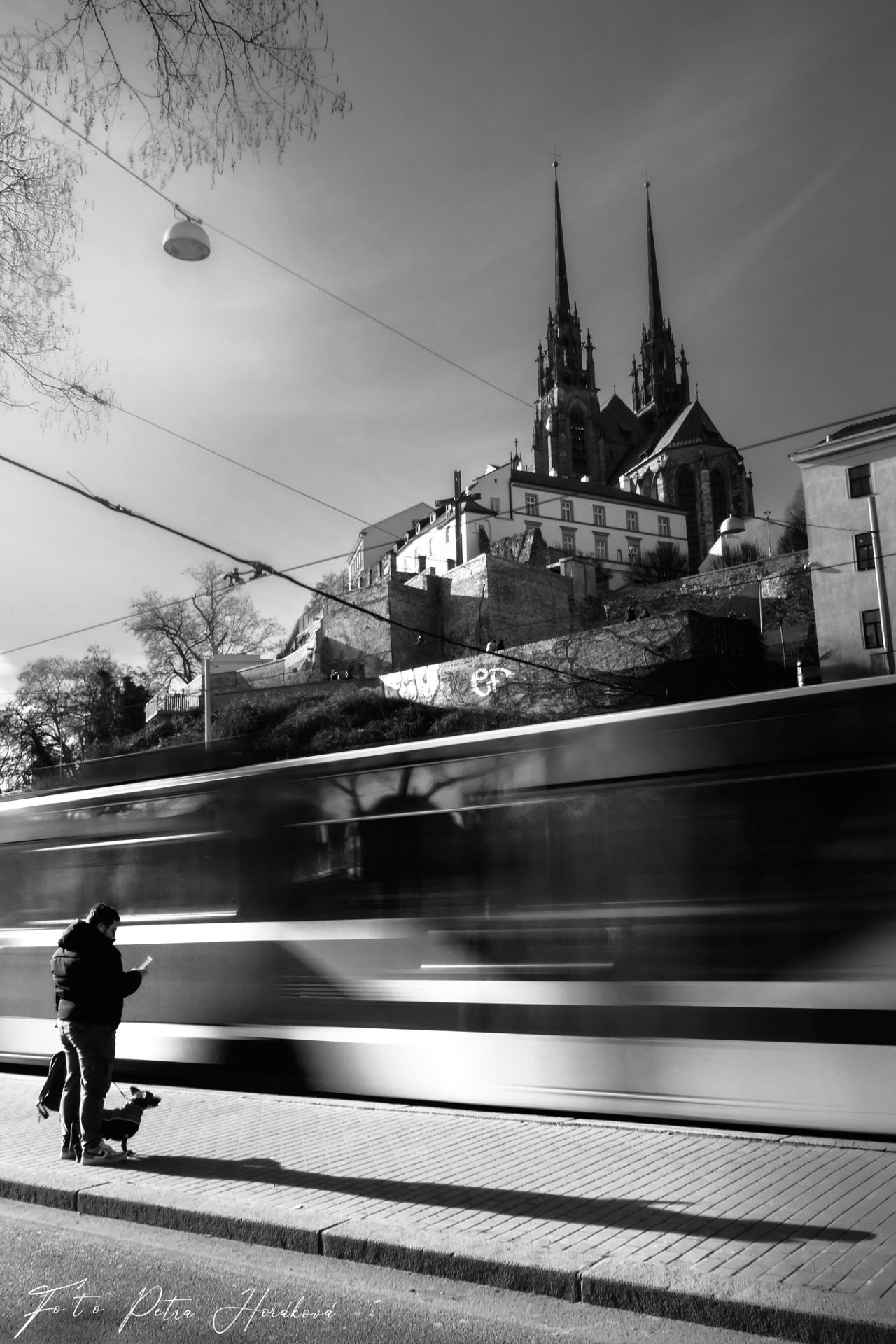
Street photography is not a competition for who can be the boldest. It’s about finding your own way of seeing the city. Instead of a straightforward portrait, you might try:
- Reflections in shop windows—especially where exteriors and interiors blend
- Shadows on walls—from people, trees, or street signs
- People behind glass—on the tram, in cafés, or at bus stops
- Silhouettes against the light—perfect at sunset or in underpasses
- Shots from behind—A figure with a backpack, a couple walking down the street, a child blowing bubbles
- Partial details—legs, hands, distinctive clothing, a rolling suitcase
- Mannequins—often unexpectedly expressive and sometimes unsettling
Practical tip: If you’re nervous about reactions, hold your camera at waist level and shoot from the hip. This makes you less conspicuous and can capture authentic moments.
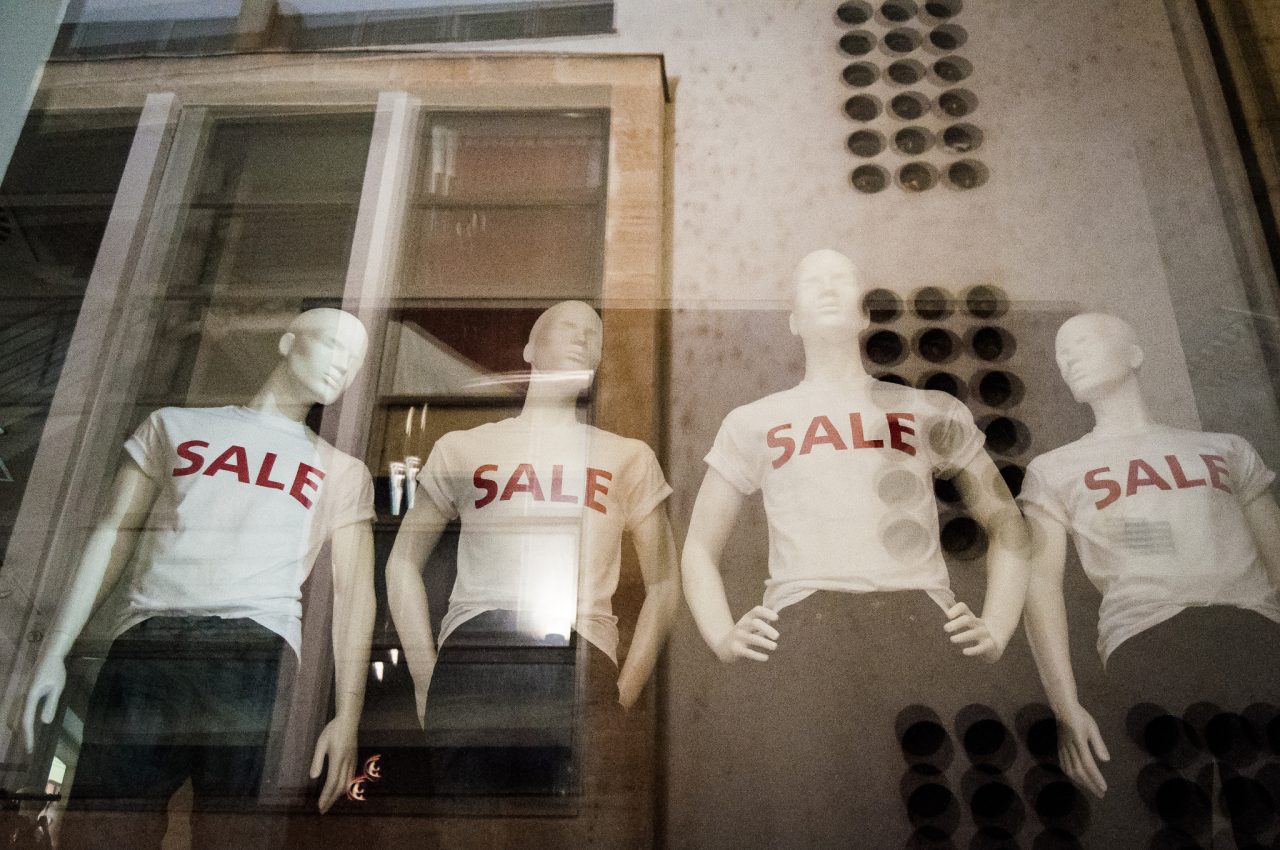
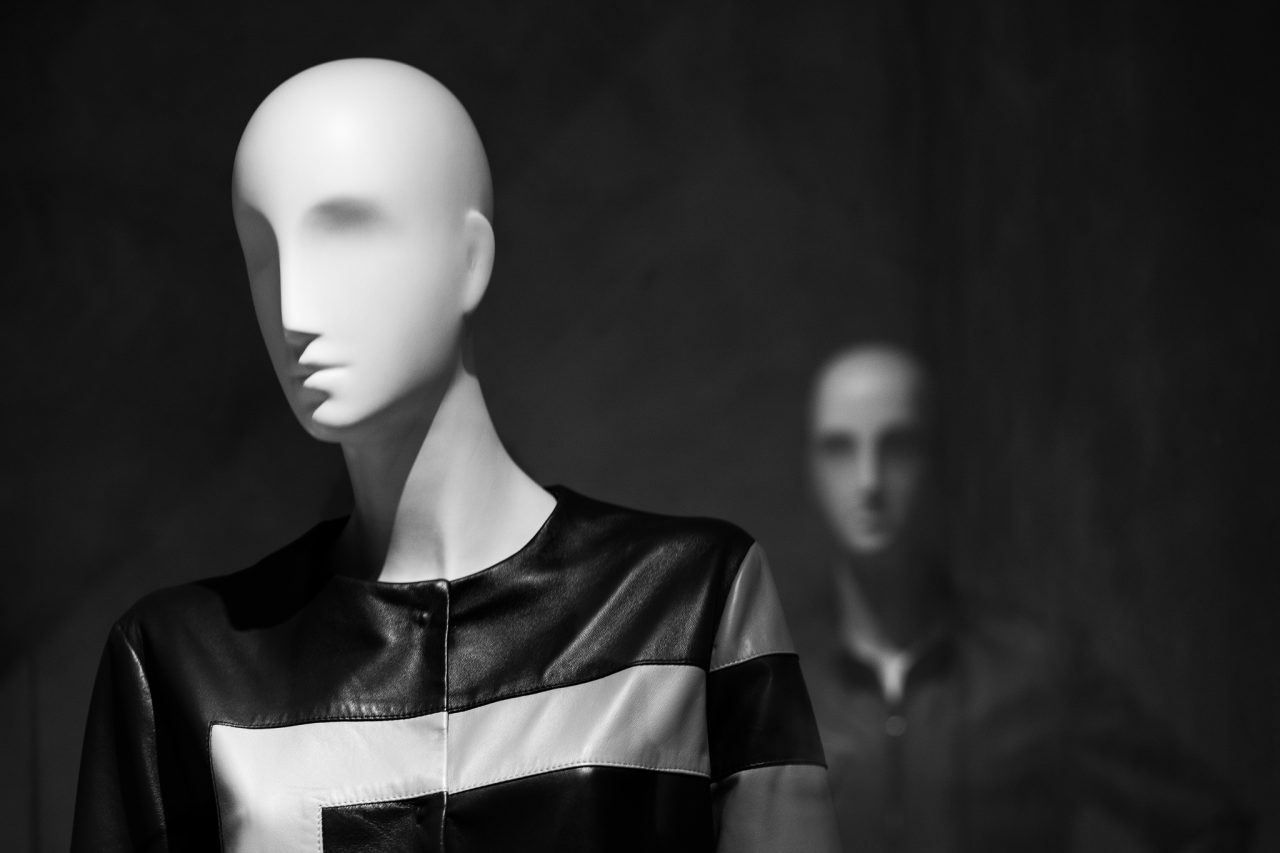
My favorite subjects in the city are mannequins. They reveal more about people than you might think. Now and then, real people appear in their reflections.
Photograph with respect
When you decide to capture not just events, but also portraits, and approach someone directly, do so with respect. Treat people as humans, not just subjects. A simple question is enough: “May I take your picture?” You don’t need a business card or artist statement. What matters most is your tone, sincerity, and smile.
For inspiration, look to Brandon Stanton (Humans of New York), who talks to people first—the photo comes later. Mihaela Noroc (Atlas of Beauty) takes a similar approach, focusing on brief, consensual encounters. It’s about connection, even if it lasts just a few minutes. Personally, I also enjoy the work of Vivian Maier, though she never asked anyone.

What helps:
- Slow down. Don’t rush the shot. A sentence, a sigh, a joke—these can bridge the gap between you and your subject.
- Offer to share the photo. Send it by email or social media to show you value their time.
- Be mindful of context. If someone seems tired, stressed, or in a sensitive situation, it’s better to hold back.
Don’t be afraid of rejection. It’s not personal. The more you shoot with respect, the more people will sense it.
Useful settings: Keep it simple
Street photography often calls for split-second decisions. Set your camera so you don’t have to think about it too much. Activate silent mode, choose center or zone focusing, and pick a lens you’re comfortable with—a 35mm works for most situations.
Aperture priority (A/Av) at f/4 to f/8 will keep most of the scene in focus. If you prefer manual mode (M) or shutter priority (S/Tv), use at least 1/250s to freeze motion, or slow down to around 1/30s for streaks, panning, or motion blur. Leave ISO on auto, but set a maximum (e.g., 1600) to avoid surprises in low light.
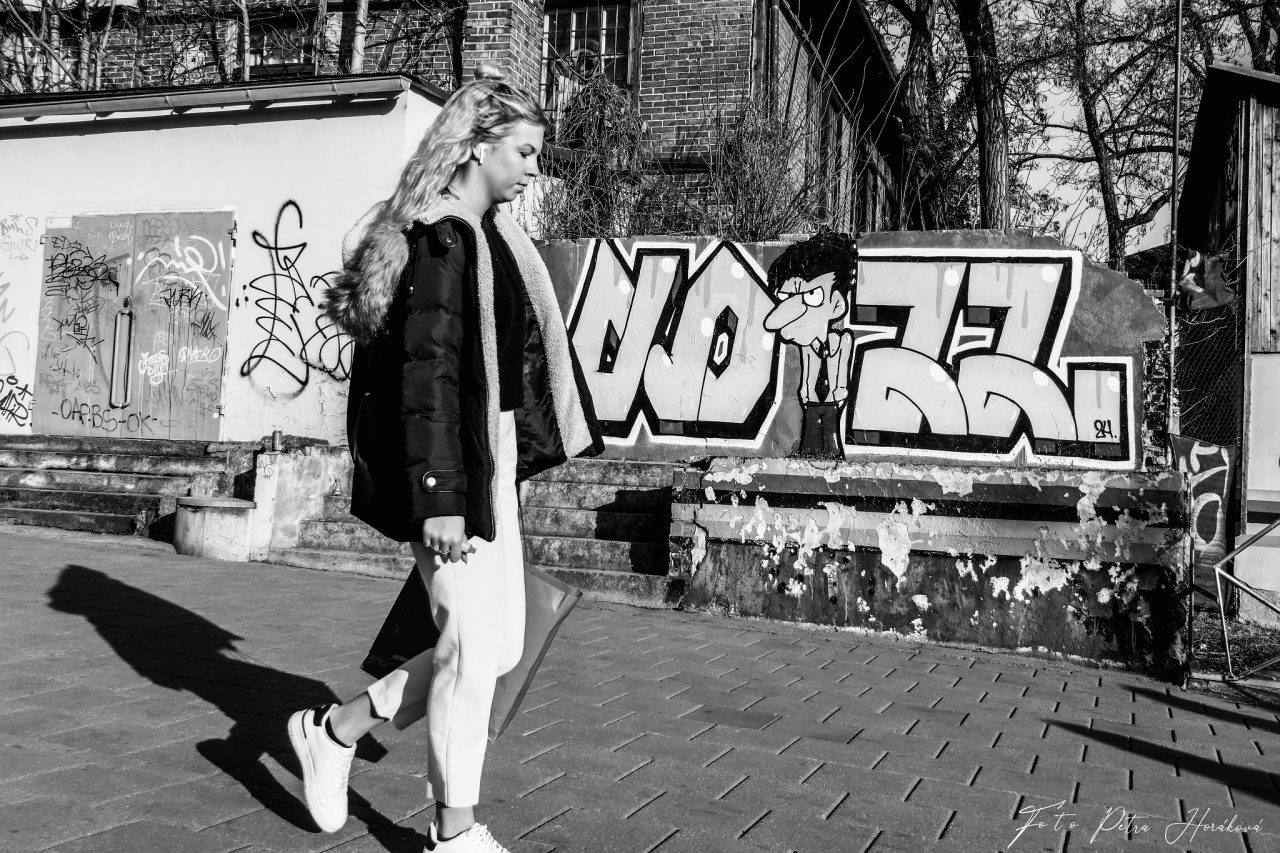
Most importantly—before you head out, charge your batteries, clear your memory card, and sharpen your senses. Your camera is a tool, but your perspective is what gives your photos meaning.
The city isn’t just streets
While the word “street” is in the title, real life happens in many places: on the train, in a waiting room, in department stores, and museums. Children running between shelves. An elderly couple quietly holding hands. A boy drawing a picture in a gallery, lost in his own world.

Look for gestures, movements, and hints of emotion. Power often lies in the ordinary. The moment someone stops, thinks, yawns, closes their eyes, or takes someone’s hand. These are the small scenes that make up the visual poetry of a city.
Sometimes it pays to stay put. Choose a good spot—a bench, steps, street corner—and wait. The street will bring the scene to you.
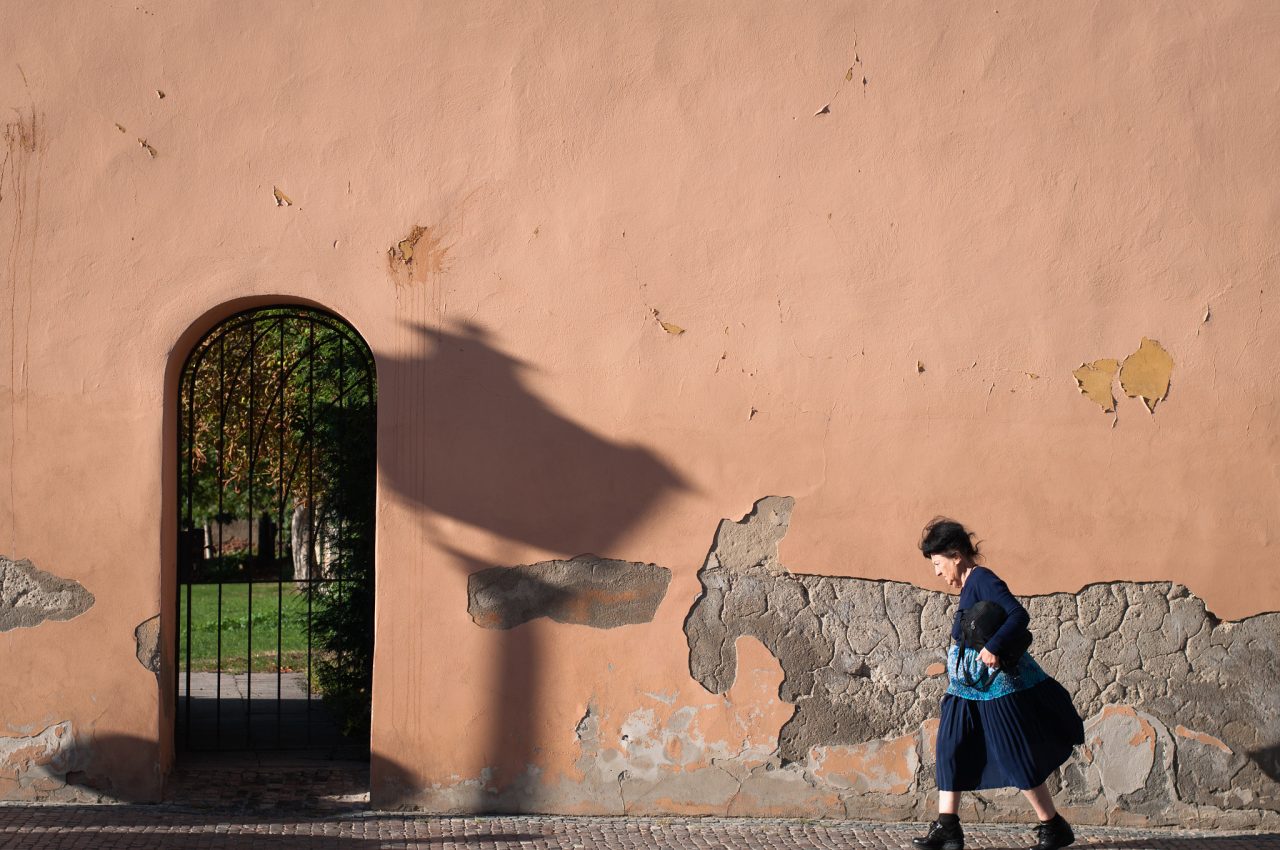
A creative approach
When you free yourself from the idea of “correctly” capturing reality, a whole new world of possibilities opens up. Notice lines—sidewalks, train tracks, lights on walls. Look for patterns—repeating columns, staircases, alternating light and shadow. Watch for layers—like reflections in glass mixing the life inside a café with events outside.

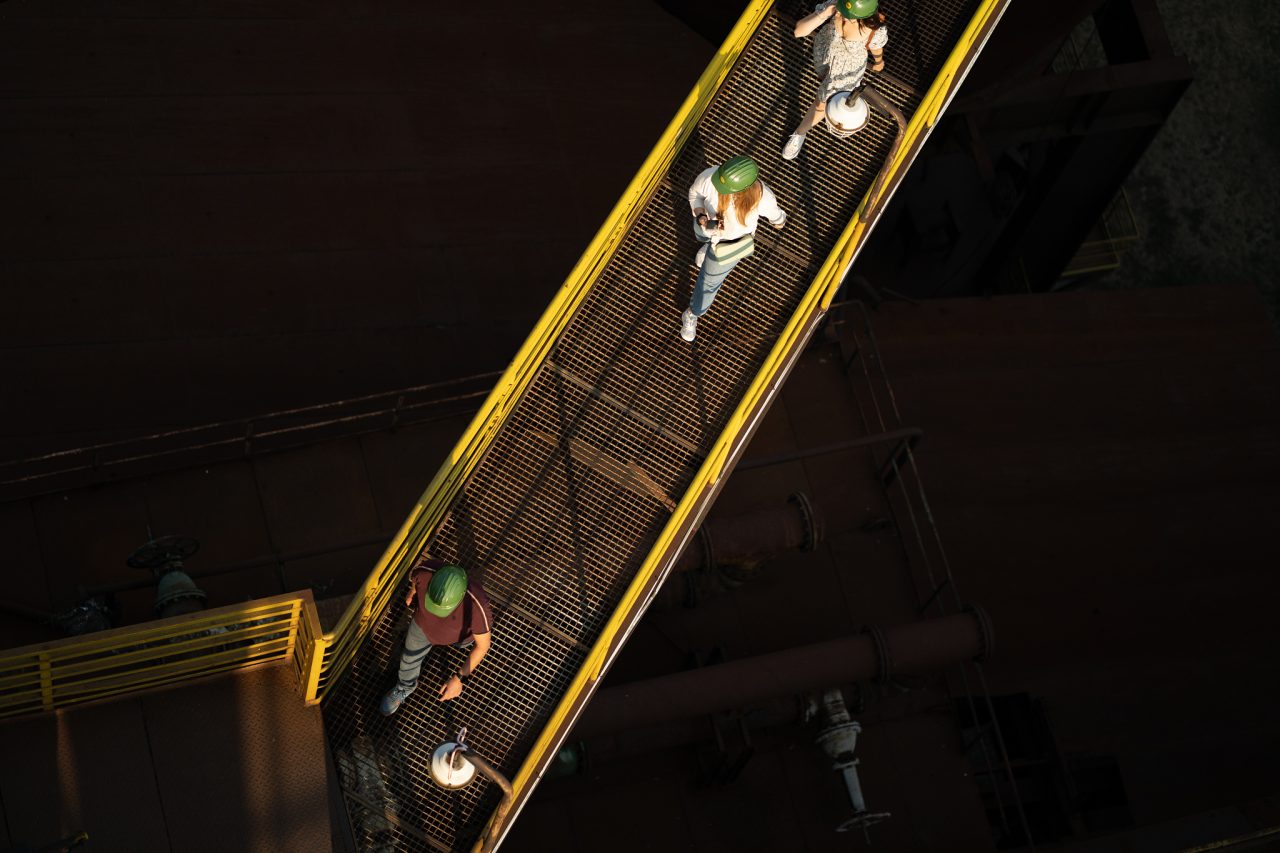
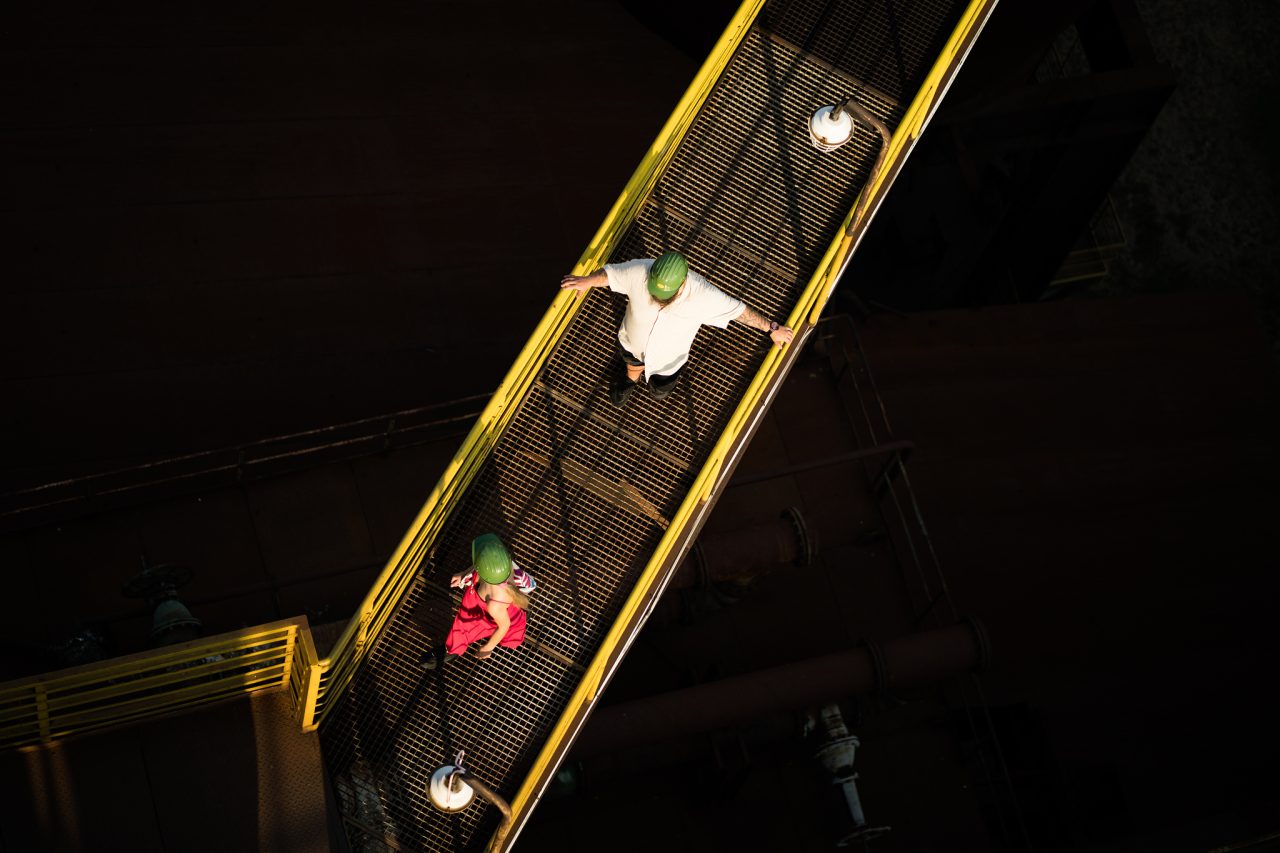
As soon as I noticed the light playing on the platform below and saw a group approaching, all I could do was wait. Out of a large number of shots, there’s only one where everything comes together: the colors, the light, the action, the moment the woman turns toward the man. f/1.8, 1/6400s, ISO 250, 85mm
Don’t be afraid to use blur. Intentional Camera Movement (ICM) can add energy to a photo. Panning, or following a moving object while blurring the background, can make even ordinary city traffic dynamic. Or take an intentionally soft shot, focusing on light, shapes, or colors rather than details.
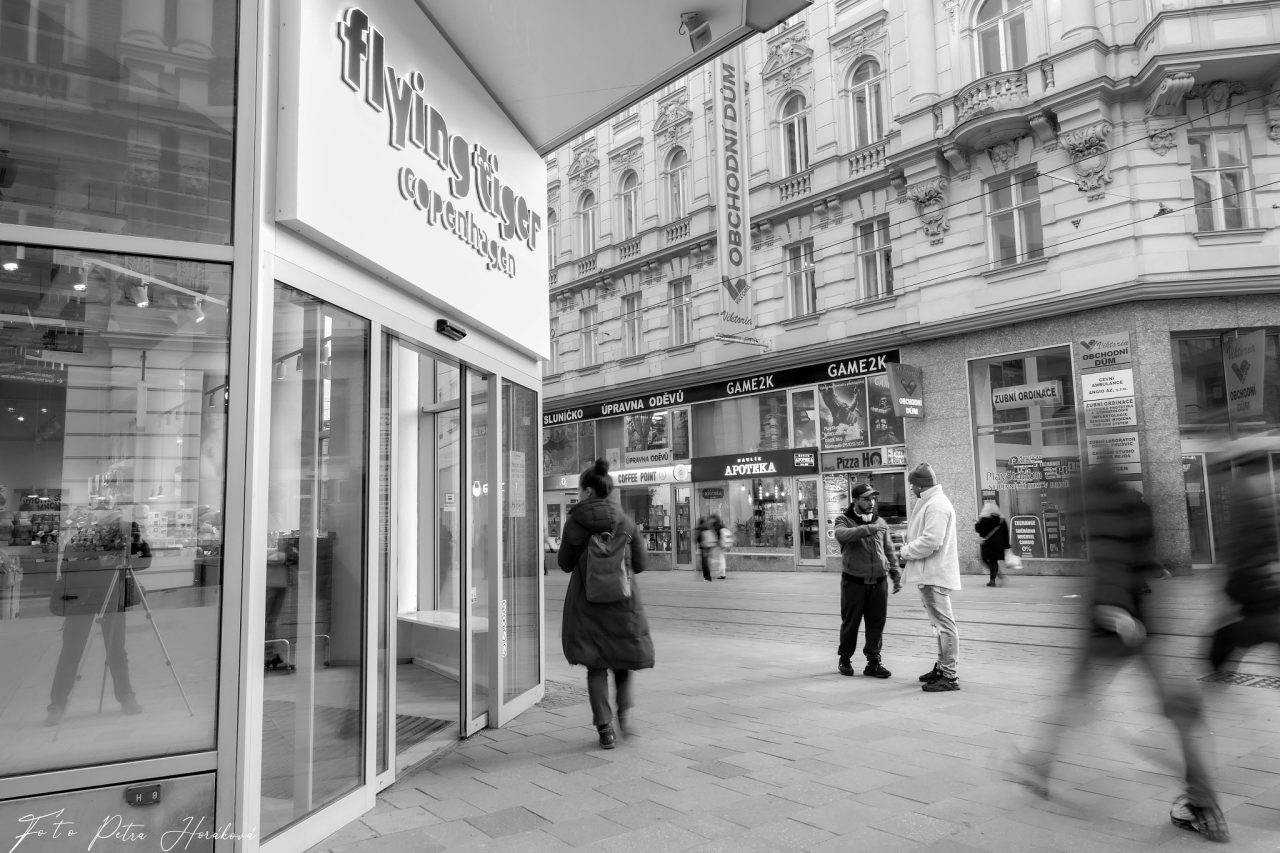
Try a self-portrait. Street photography is a perfect way to search not only for others, but also for yourself. The city offers countless opportunities for self-portraits: in shop window reflections, as a shadow on a wall, as a silhouette in a doorway.
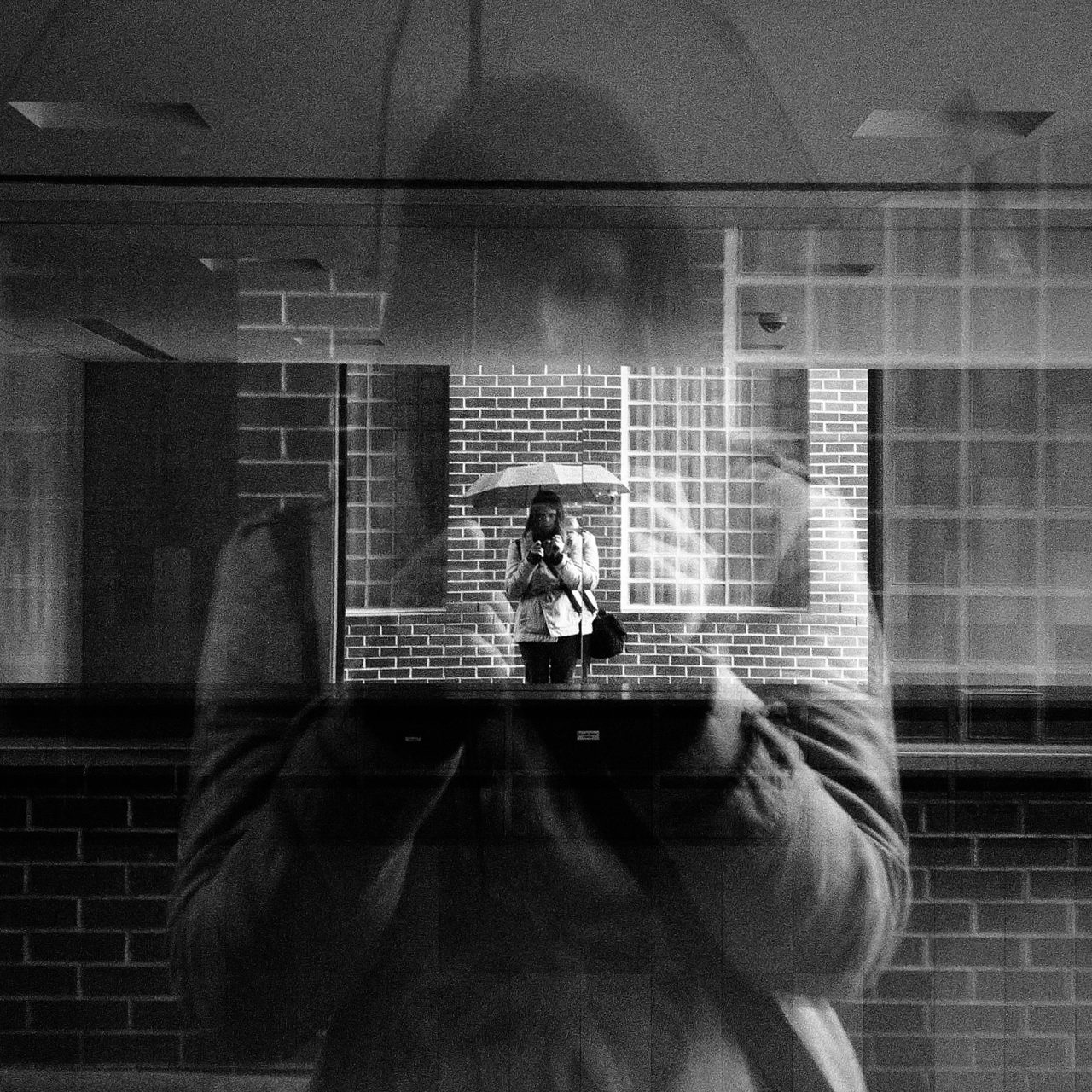
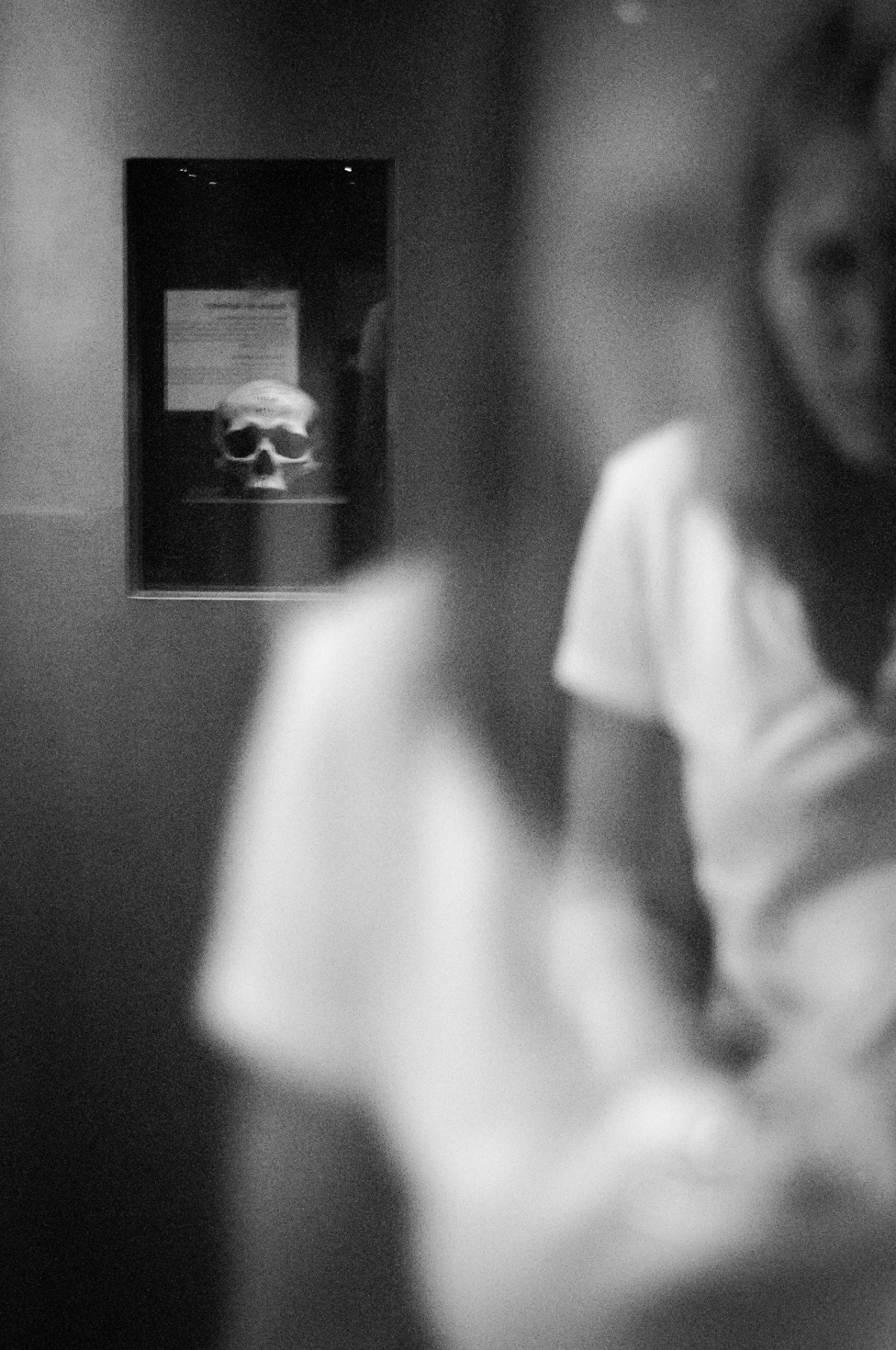
I like finding myself in reflections, and the city, with its shop windows and museums full of odd objects, is the perfect backdrop.
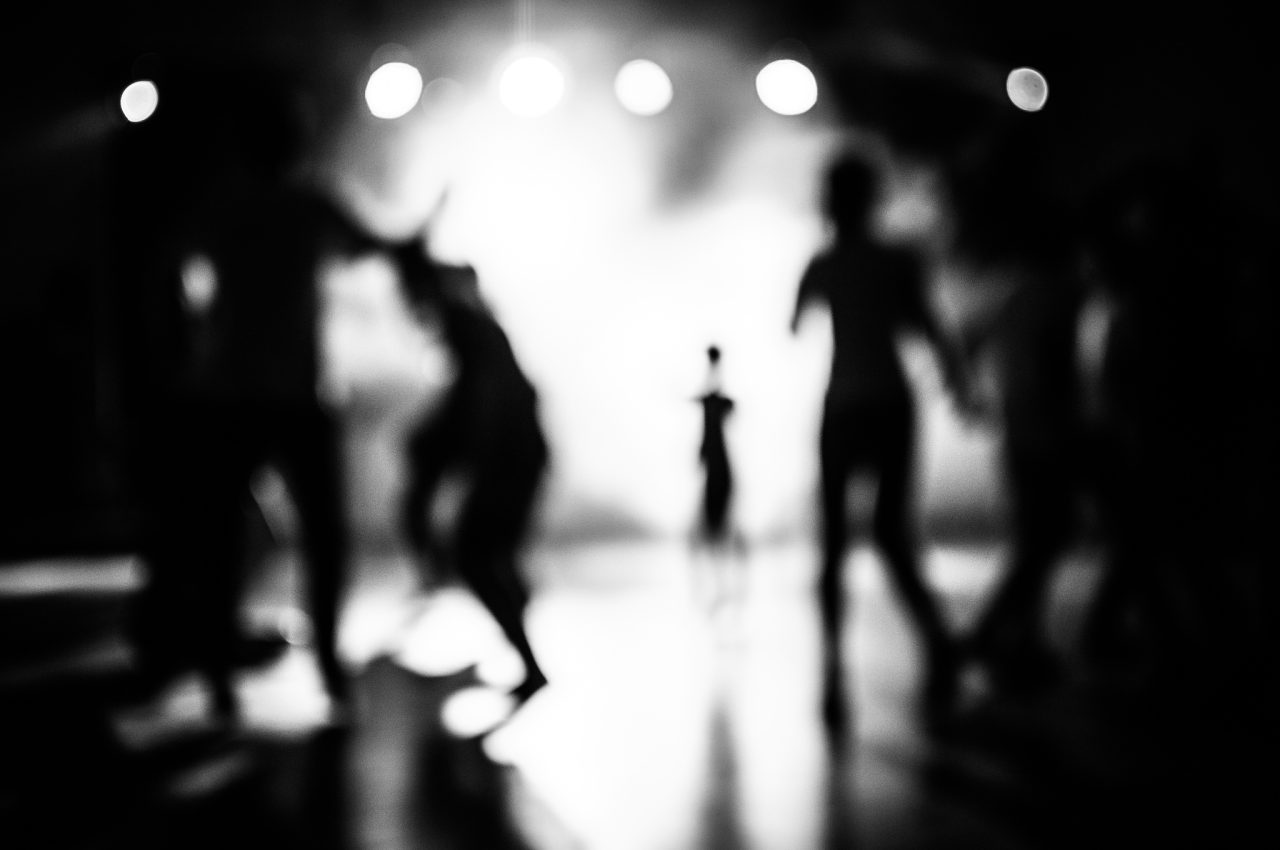
And here’s another idea: Choose a theme for your street photography. For example, the color yellow, bicycles, and people with umbrellas. Spend the day photographing only that. This helps you cut through visual clutter and focus your attention.
What the law says
In many countries, it’s legal to photograph and publish images of people without their consent if the artistic intent and purpose are reasonable. In other words, not meant to humiliate, intrude, or degrade. When in doubt, ask. If someone asks you to delete a photo, do it.
Street photography isn’t about catching people off guard. It’s about the photographer’s relationship with the city, with everyday life, and with the people who inhabit it.